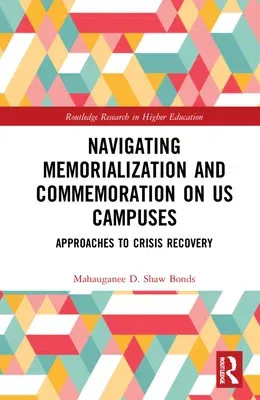Mahauganee D Shaw Bonds
(Author)Navigating Memorialization and Commemoration on U.S. Campuses: Approaches to Crisis RecoveryHardcover, 31 January 2022

Qty
1
Turbo
Ships in 2 - 3 days
In Stock
Free Delivery
Cash on Delivery
15 Days
Free Returns
Secure Checkout

Part of Series
Routledge Research in Higher Education
Print Length
142 pages
Language
English
Publisher
Routledge
Date Published
31 Jan 2022
ISBN-10
0367761017
ISBN-13
9780367761011
Description
Product Details
Author:
Book Format:
Hardcover
Country of Origin:
US
Date Published:
31 January 2022
Dimensions:
22.86 x
15.24 x
1.12 cm
ISBN-10:
0367761017
ISBN-13:
9780367761011
Language:
English
Location:
Oxford
Pages:
142
Publisher:
Weight:
385.55 gm